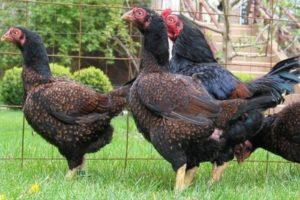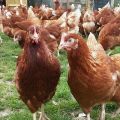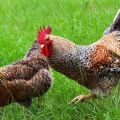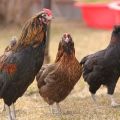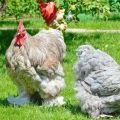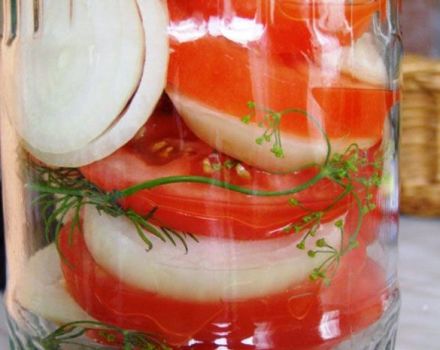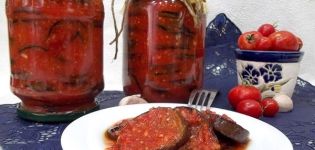Description and characteristics of the Amroks chicken breed, rules of maintenance and care
If we compare Amroks with other breeds of chickens, then this type of poultry is distinguished by increased productivity, easy to breed, unpretentious and capable of laying large eggs. Females independently breed offspring, provided that the correct complementary food is provided. Chickens of this breed reach sexual maturity early, which is why the first batches of eggs are of poor quality.
Origin story
The Amrox breed was officially registered in 1848. This type of poultry originated from the selective selection of Plymouth Rock individuals. The breed was bred in Germany, but chickens were widespread first in the United States, and then in Europe.
This bird is notable for the fact that individuals are bred on the American continent that differ in appearance from their "brothers" from the Old World.
The Amrox breed is highly popular on small farms. Industrial poultry farms prefer other types of chickens.
Description and characteristics of the breed
Chickens Amroks are distinguished by the following features:
- loud voice;
- good survival rate in new climatic conditions;
- increased resistance to common diseases;
- calm disposition.
This breed is bred for meat and eggs. Amroks chickens are relatively large in size: the total weight of males reaches 3.5 kilograms, females - 2 kilograms.
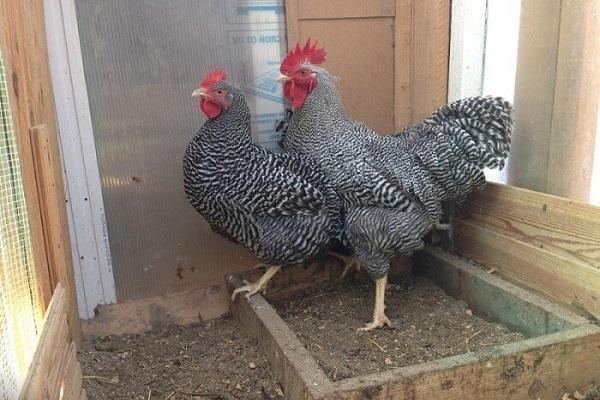
Appearance of Amrox
Chickens of this breed are distinguished by the following features:
- brown eyes with a reddish tint;
- medium-sized head;
- large comb with 5-6 teeth;
- medium-sized oval earrings;
- wide body;
- the tail is at a 45 degree angle.
Amrox's wings are tightly pressed. This bird cannot fly, which makes breeding easier. An important feature of this breed is the stripes that run along the body.
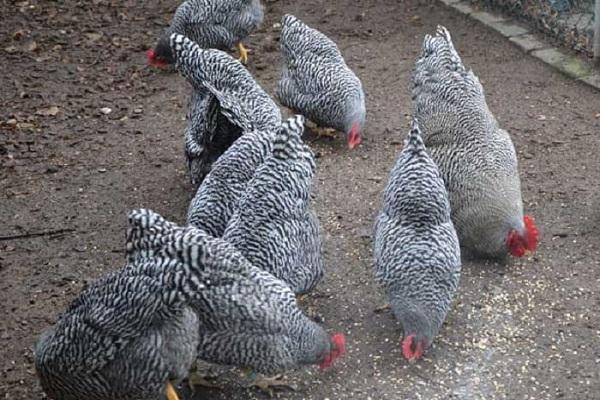
Bird productivity
The Amroks breed is distinguished by increased survival rate: 95% of young animals grow up to adults. The bird is characterized by rapid development and early puberty. During the first 6 months, females gain up to two kilograms, males - 3.5 kilograms. Moreover, the growth of chickens continues for another year.
Egg
Females are ready to lay from 6 months. Amrox hatches up to 220 eggs per year. This indicator varies depending on living conditions and some other factors.As the chicken matures, productivity gradually decreases.
The mass of eggs with a light brown shell is 60 grams. The dwarf variety of Amroks is less productive. These chickens annually produce up to 140 eggs with a total weight of up to 40 grams.
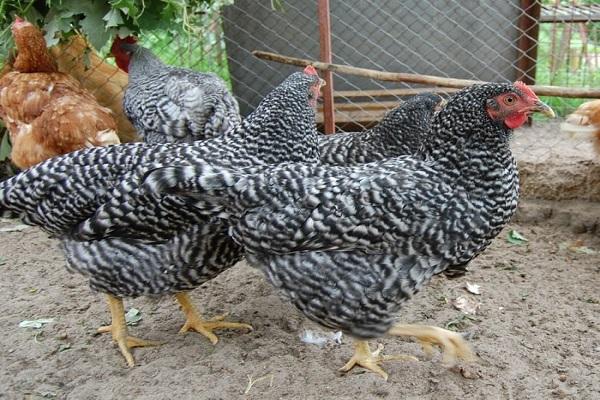
Meat
As already mentioned, the total weight of Amroks roosters is 3.5 kilograms, females - 2 kilograms. If you systematically feed chickens of this breed to get meat, then both indicators can increase, respectively, to four and three kilograms.
Character of chickens
Representatives of the Amrox breed reach large sizes, due to which poultry cannot move quickly. This feature affected the nature of the chickens who behave calmly. Birds are aggressive when they feel danger to young animals.
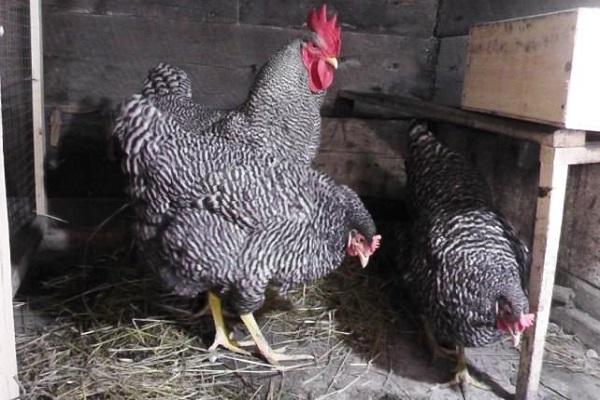
Advantages and disadvantages
Amroks birds have the following advantages:
- Strong immunity. Adults and chicks rarely become infected with viral or infectious pathologies.
- Calm disposition. The absence of aggression in the behavior of birds is explained by their large size. Also Amrox chickens love people who bring food.
- Good performance. The eggs of this breed are large and free of visible defects. The meat, both females and roosters, tastes good.
- They are able to quickly adapt to new conditions. This feature is due to the presence of strong immunity and a calm disposition.
Amroxes do not impose increased demands on personal care. It is impossible to highlight the shortcomings of this breed.
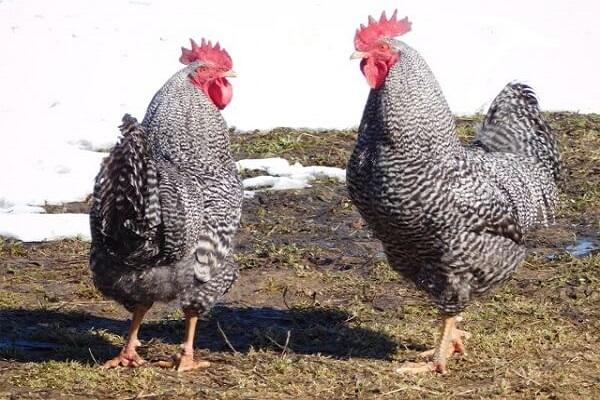
Recommendations for maintenance and care
To ensure normal performance of chickens, a number of rules must be observed:
- clean and ventilate the chicken coop at least 1-2 times a month;
- periodically disinfect the poultry house by treating the surface with a mixture of lime and peat (birds should be walking at this moment);
- control the acceptable levels of temperature and humidity (if necessary, turn on the heater);
- turn on the light in the mornings in winter and evenings in other seasons;
- install containers with ash and sand in the hen house, accessible to chickens (necessary to prevent infection with parasites);
- clean the feeders after eating;
- wash drinkers and feeders regularly.
Before the onset of cold weather, it is recommended to make additional flooring on the floor, which will keep the heat in the chicken coop. Amroks can be kept with chickens of other breeds. The only exception is when they are grown for breeding.
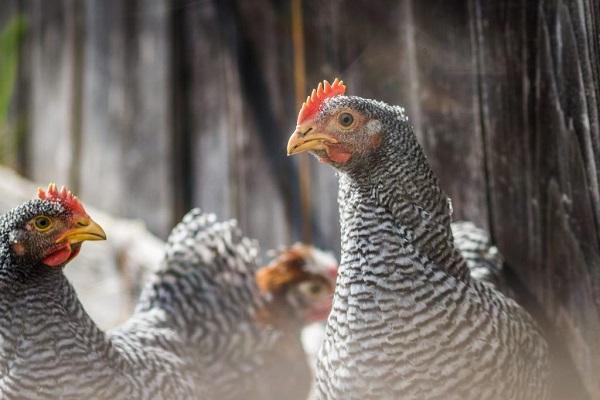
Arrangement of a chicken coop
The main requirement that chicken coops where the Amroks breed is bred must meet is the absence of drafts and dampness. In order to save money and comply with these conditions, it is recommended to place windows on the south side. Ceilings and walls must be free from defects. Ventilation with an internal limiter is considered optimal for the chicken coop.
To protect birds from rodents and cold weather, it is recommended to place the floors at a height of at least 40 centimeters from ground level. Additionally, you should lay straw, peat and lay a layer of small stones. The perches should be placed at a height of 15-30 centimeters above the floor level, be sure to install ladders.
During the laying period, chickens do not tolerate loud noises well. Therefore, sufficient soundproofing must be provided in the house. The indoor air temperature should be + 18-20 degrees.

The area of the house depends on the number of chickens. On average, two adults need at least 1.5 square meters of free space. Chicken coops are recommended to be installed on the west or south side of the site.
Place for walking
Amroks cannot fly. Therefore, the place for walking can be fenced off with a low net. In this case, a canopy or roof should be installed that will protect the chickens from the sun and rain.
There should be fresh grass in the walking area.
Feeders and drinkers
Feeders and drinkers are recommended to be placed in the chicken coop. The containers should be cleaned after each meal. Typically, chickens of this breed are fed three times a day. If the walking area is organized correctly, then there is no need to install feeders here: birds will consume grass, small stones (necessary for digestion), and more.

Molting and pause in egg-laying
With the onset of autumn, birds begin to molt. During this period, the chickens stop laying eggs. During moulting, additional lighting must be supplied to the house.
Exhibition preparation
Poultry show specimens cannot have the following features:
- black plumage;
- short, slender or narrow build;
- there are bald spots on the body;
- the comb is not worth it;
- eyes, metatarsus and beak are of a non-standard color;
- rough skin on the crest, earrings and lobes;
- long and pointed claws;
- low productivity.
When preparing a chicken for an exhibition, it is not recommended to keep the bird in direct sunlight for a long time, due to which yellow spots appear on the body.

How to feed chickens and adult chickens?
Amroxes are not demanding on nutrition. It is recommended to feed chickens with complex formulations, introducing into the diet:
- grain crops (barley, millet, buckwheat);
- vegetables (potatoes, carrots, beets and others);
- legumes;
- greenery;
- protein (egg is allowed).
For the first 1.5 years after birth, chickens should be given a mixture of green grass, grains and boiled eggs. Also, the diet of chickens should include vitamin and mineral supplements, fish oil and yeast.
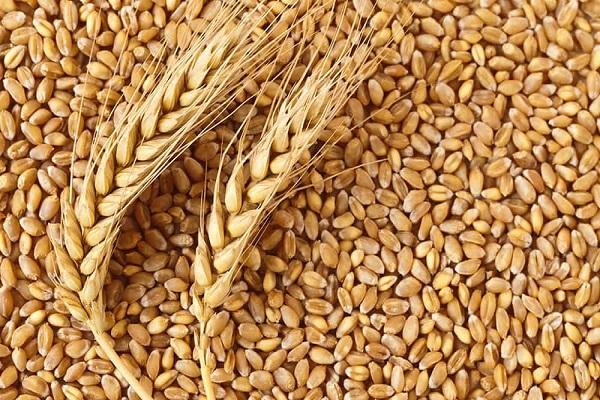
Features of breeding birds
Chickens Amroksa are distinguished by a developed maternal instinct. Therefore, to breed this breed, it is enough to keep females and roosters in the house. Up to 80% of hatched chicks grow to adults. Eggs can be placed in incubators if required.
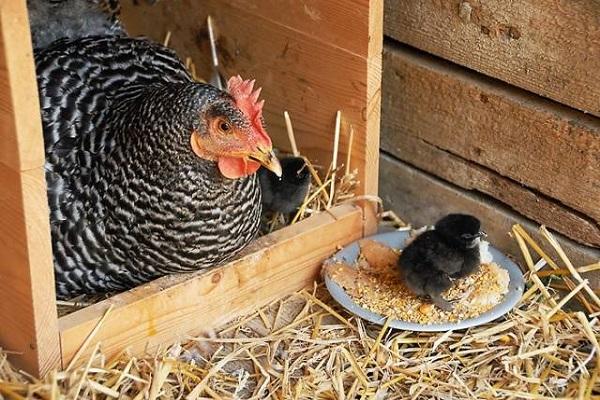
Diseases and treatment
Amroks are more often affected by the following pathologies:
- eimeriosis (treatment - coccidiostatic drugs);
- plague of chickens and pseudo-plague, or Newcastle disease (no cure);
- bird paralysis, or Marek's disease (no cure);
- leukemia and laryngotracheitis (no cure).
Chickens of this breed are distinguished by persistent immunity. On average, up to 5% of the population is infected with parasites.
